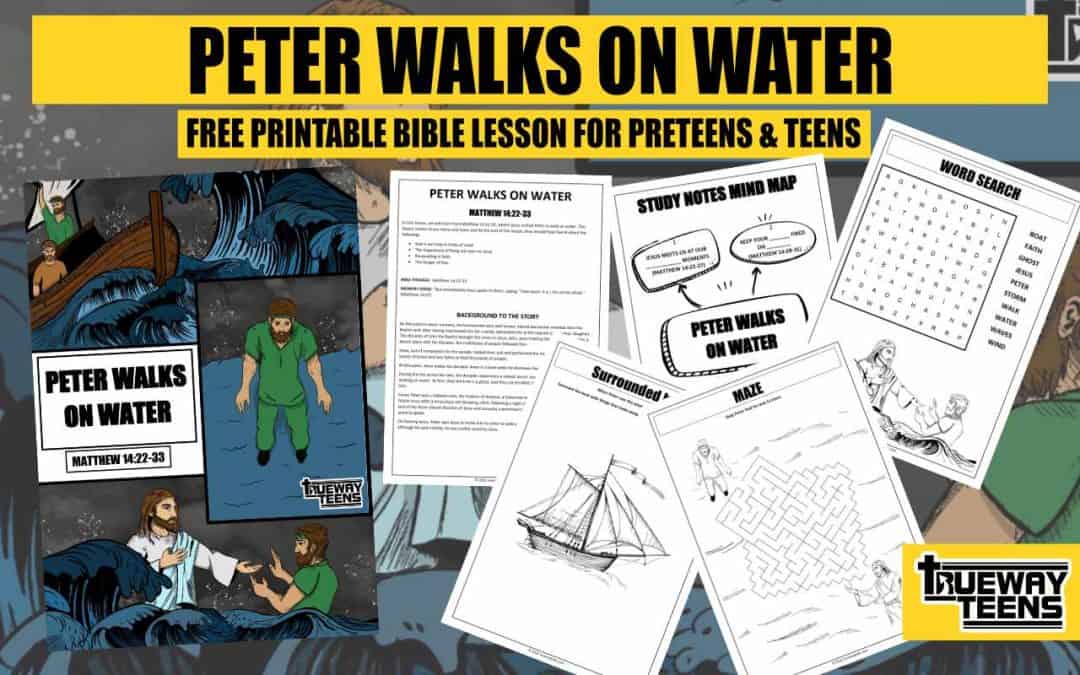In this lesson, we will learn from Matthew 14:22-33, where Jesus invited Peter to walk on water. This lesson relates to pre-teens and teens and by the end of this lesson, they should have learnt about the following:
- God is our help in times of need.
- The importance of fixing our eyes on Jesus.
- Responding in faith.
- The danger of fear.
BIBLE PASSAGE: Matthew 14:22-33
MEMORY VERSE: “But immediately Jesus spoke to them, saying, “Take heart; it is I. Do not be afraid.” (Matthew 14:27)
DOWNLOAD THE FREE PRINTABLE LESSON

BIBLE STUDY NOTES FOR TEENS
By this point in Jesus’ ministry, He had become very well known. Herod had earlier arrested John the Baptist and, after having imprisoned him for a while, beheaded him at the request of Herodias’ daughter. The disciples of John the Baptist brought the news to Jesus, who, upon hearing the news, departed for a desert place with His disciples. But multitudes of people followed Him.
Jesus, out of compassion for the people, healed their sick and performed the miracle of multiplying the five loaves of bread and two fishes to feed thousands of people.
At this point, Jesus makes His disciples leave in a boat while He dismisses the crowd.
During the trip across the lake, the disciples experience a violent storm. Jesus approaches the disciples walking on water. At first, they think He is a ghost, and they are terrified. But Jesus assured them it was Him.
Simon Peter was a Galilean man, the brother of Andrew, a fisherman by occupation. Peter was called to follow Jesus after a miraculous net-breaking catch, following a night of fruitless fishing expedition. Peter is one of the three closest disciples of Jesus and occupies a prominent position among the rest. Peter is often quick to speak.
On hearing Jesus, Peter asks Jesus to invite him to come to walk on water. Jesus says, “come”, and although he sank initially, he was swiftly saved by Jesus.
KEY POINTS FROM THE PASSAGE
1. JESUS MEETS US AT OUR DARKEST MOMENTS (MATTHEW 14:22-27)
With the storm raging as violently as ever and Jesus seemingly far away and still on shore, the disciples must have felt utter despair and helplessness. But we see Jesus appearing to them just at the right moment. Jesus never forsakes nor abandons His people. Even when the storms of life rage and the sky become gloomy, He is “an ever-present help in trouble” (Psalm 46:1). He has said, “Never will I leave you; never will I forsake you” (Hebrews 13:5). Even though we may not see Him or feel His presence, in the darkest of storms, we should realize that He is always near.
Beth Moore wrote, “We want Christ to hurry and calm the storm. He wants us to find Him in the midst of it first.”
It is also important to note why the disciples were in the boat on the lake. They were there because they obeyed Jesus’ command to cross over to the other side (Matthew 14:22). When we face storms in life it doesn’t mean we’ve done something wrong. Sometimes, it means we are exactly in the place where God wants us to grow.
2. KEEP YOUR EYES FIXED ON JESUS (MATTHEW 14:28-31)
The disciples were in the middle of a storm out on the water. The waves were high, and the wind was strong. While most of us would have been clinging to anything that floats, Peter asks Jesus to join Him on the water.
Peter realized something super important. The safest place to be is close to Jesus.
Peter set out to walk on the stormy waters as long as he kept his gaze on Jesus. But he began to sink in the very same waters when his attention shifted from the Lord to the unruly waves.
Most of the time, during moments of crises, we are usually tempted to look to ourselves. We focus on our abilities, resources, connections, family, etc. But we find them incapable of providing the solutions we desperately needed.
Other times, all we can see, and feel is the reality and the pressure of the circumstances that surround us. The waves of life, hurts, failures, mistakes, and sorrow fight to become our focus. We must learn to look away from the storm and unto Him, who is truly capable, able, and willing to help us. God promises in Isaiah 43:2, “When you pass through the waters, I will be with you; and when you pass through the rivers, they will not sweep over you. When you walk through the fire, you will not be burned; the flames will not set you ablaze.”
We must try our best to fix our eyes on Jesus and look away from all that try to steal our focus from Him
3. FEAR SINKS (MATTHEW 14:29-31)
Matthew 14:30 points out this concerning Peter, “But when he saw the wind, he was afraid, and beginning to sink he cried out, “Lord, save me.”
As surely as faith and trust in Jesus lifts, fear sinks. Fear of whatever form weakens and harms us. The command to “Fear Not” appears an amazingly Three hundred and sixty-five times in the Bible. That’s a “fear not” for each day of the year.
Why does the Bible tell us not to fear so often? Because we find it so easy to worry and be afraid, it is impossible to live up to God’s expectations, obey His instructions, and walk in obedience if we allow fear to fill our hearts and control our actions.
Peter feared the storm and began to sink. But he knew what to do. He called out to Jesus, and a loving hand of help was readily available to lift him.
When we begin to let worry and fear fill our lives, allow fear in our hearts, sinking hopelessly, and see no way out, we shouldn’t stay silent and drown in guilt and condemnation. We should cry out to Jesus; He is more than willing to lift us. Psalms 34:4 says, ” I sought the LORD, and he heard me and delivered me from all my fears”.
4. RESPOND IN FAITH AND UNCONDITIONAL OBEDIENCE (MATTHEW 14: 28-29)
Look at the events again. Peter says, Lord if it’s you, tell me to come to you on the water.” Jesus says, “Come.” Peter jumped into the raging waters, walked on the water, and came toward Jesus. Amazing, Isn’t it?
How often have we prayed about something and then don’t respond when God grants our request? We pray for a chance to share our faith with friends, but when we have the opportunity, we are too shy or scared to say anything.
Other times we pray for a chance to serve God, but when someone invites us to get involved in ministry, we make excuses why now is not a good time.
Peter proved his integrity and faithfulness when he asked and then obeyed. We, too, must trust in unconditional obedience! Psalm 119:60 says, “I will hasten and not delay obeying your commands.”
When God asks us to do something, we should not procrastinate. We should not make excuses and drag our feet. We should trust and obey immediately. Peter didn’t ask Jesus to calm the storm before he stepped out. Neither did he make a buoyancy aid before jumping onto the water just in case. He simply took Jesus at His Word and trusted Him.
CONCLUSION
At the end of this passage, all those who were in the boat worshipped Jesus, saying, “Truly you are the Son of God.” Once again, they had learned first-hand that nothing is impossible for God and no storm is more powerful than Him. We are reminded that regardless of our environment, God is able and will keep us safe as we place our faith and trust in Him.
YOUTH GAMES AND ACTIVITIES FOR PETER WALKS ON WATER
CROSS THE SEA
- Lay obstacles around the room. It can be anything from cups to chair.
- Blindfold a player. Explain that they must cross the room without bumping anything.
- Pick another player to give them directions. Other players can make the noise of the wind.
- The player must listen careful and cross the room.
- Talk about how we must listen carefully to Jesus and trust in Him and His direction.
PAPER BOAT RACE
- Have the children make and decorate paper boats. They can be of traditional design or any style they like.
- Using a bowl of water, time how long it takes each child to blow their boat across the water.
- If the boat capsizes, they suffer a 3 second delay before they can reset it and continue.
GUESS THE ITEM
- Write some words from the Bible passage. For example, wind, walk, storm and boat. Make sure there is at least one word for each person. Fold all the words and put into a bowl.
- Have the first player pick a piece of paper from the bowl.
- Next have them roll a dice.
- 1 or 2 means act out the object
- 3 or 4 means draw the object
- 5 or 6 means describe the object by only answering yes or no. The other players must try to guess the object.
Free printable Teen Worksheets in the lesson pack
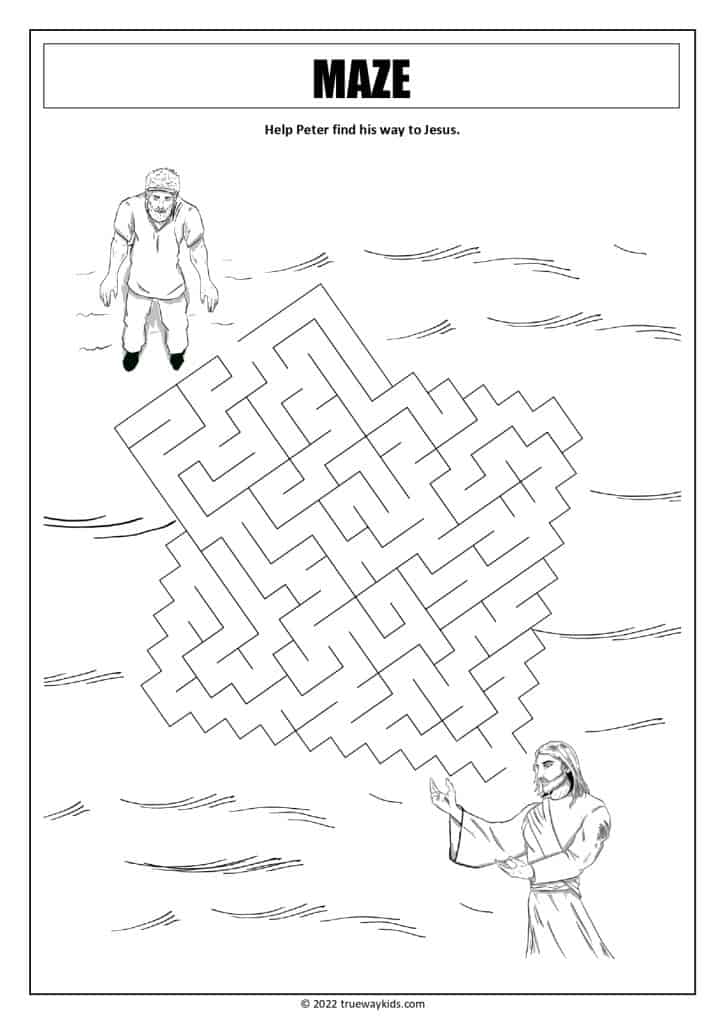
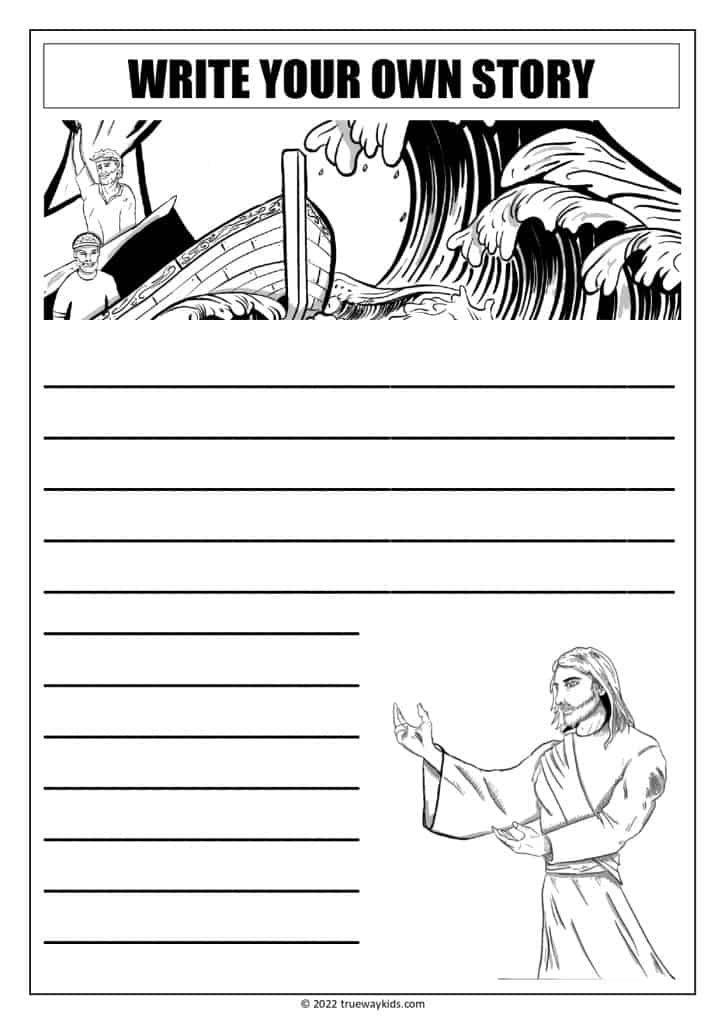
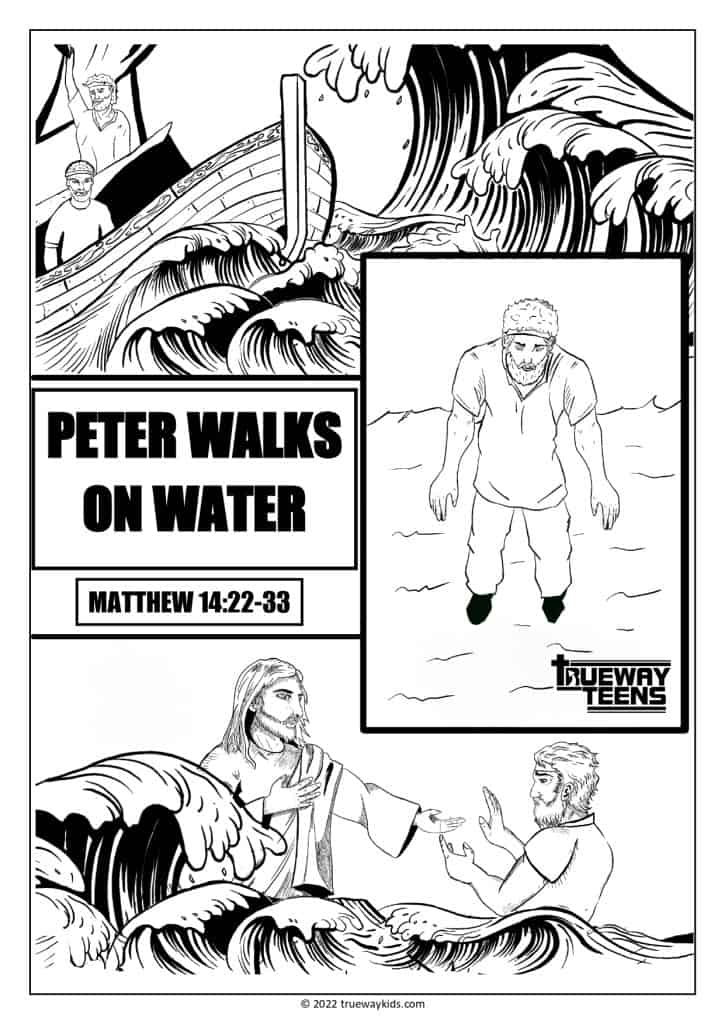
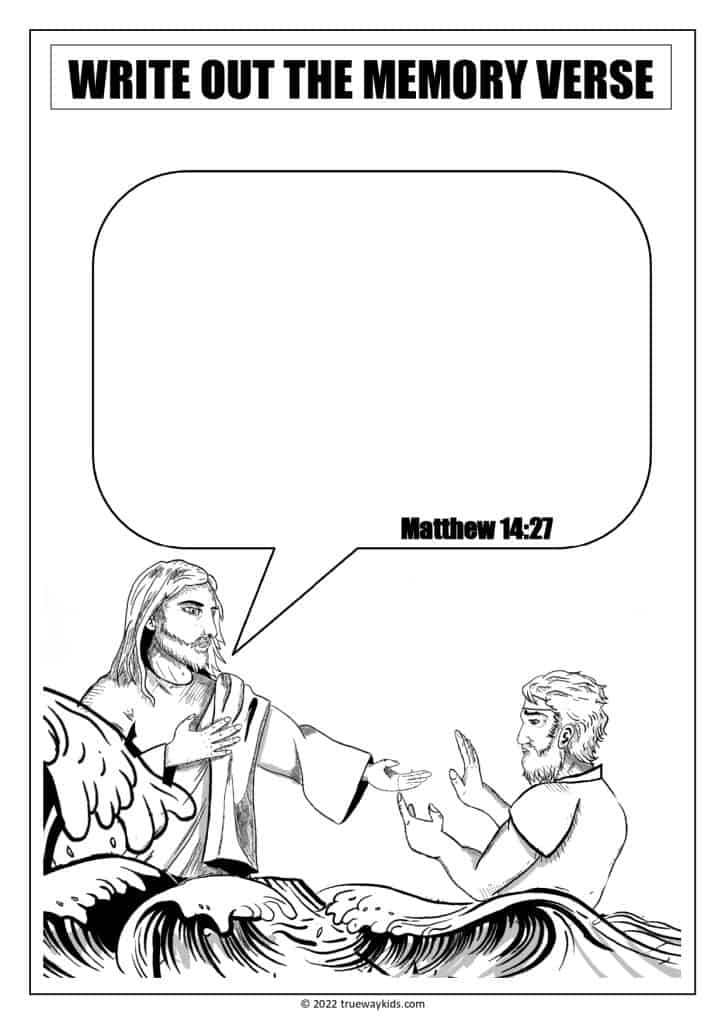
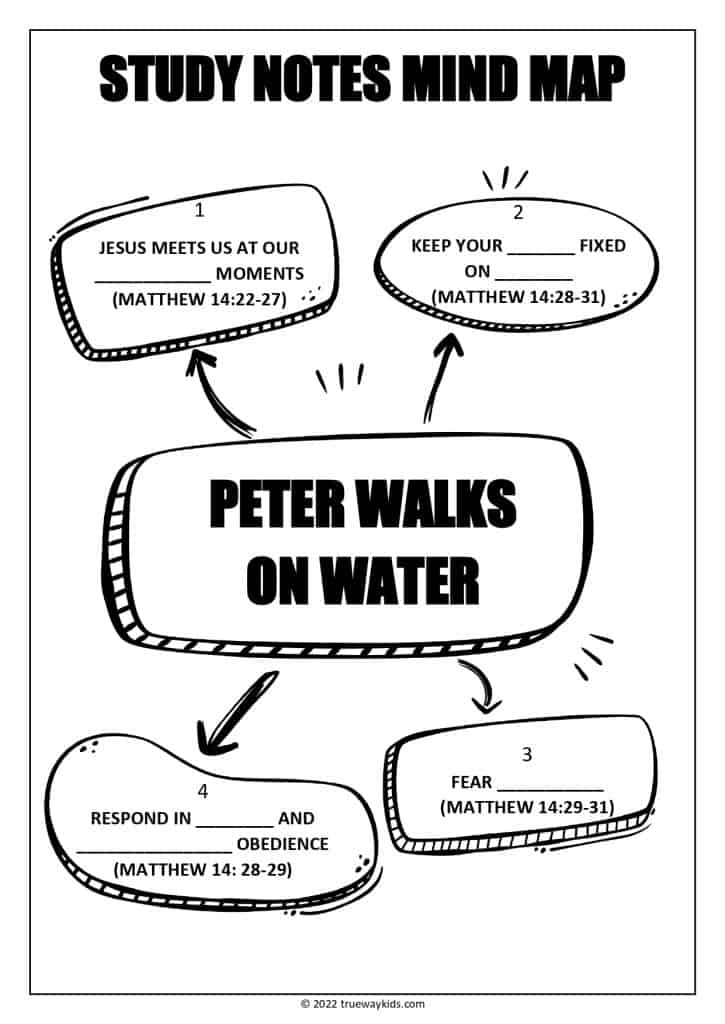
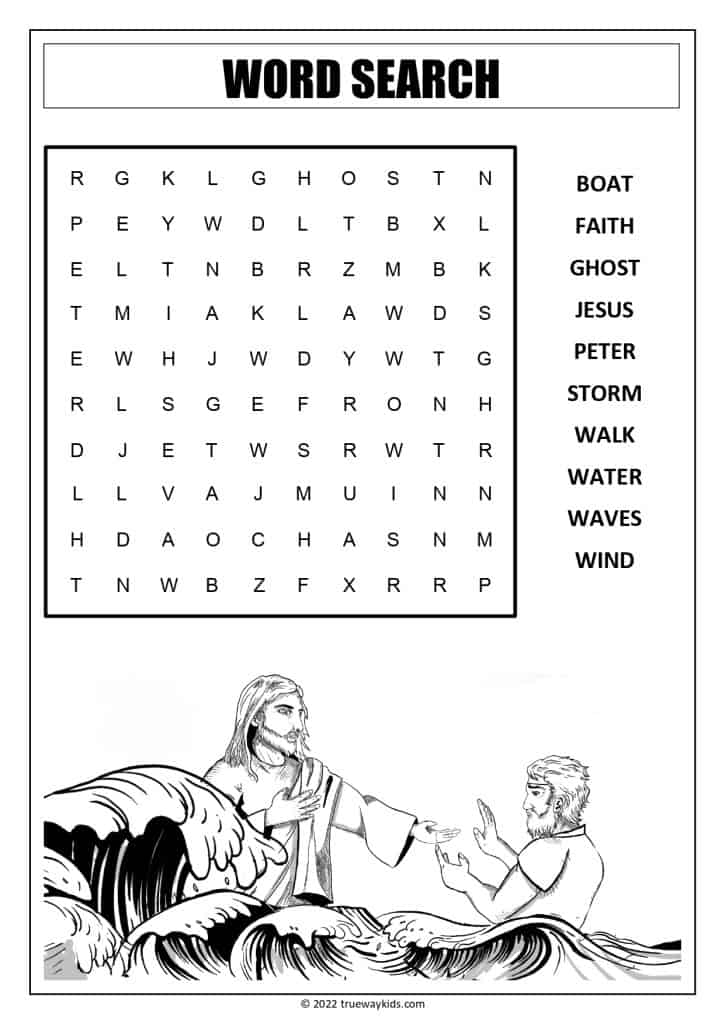
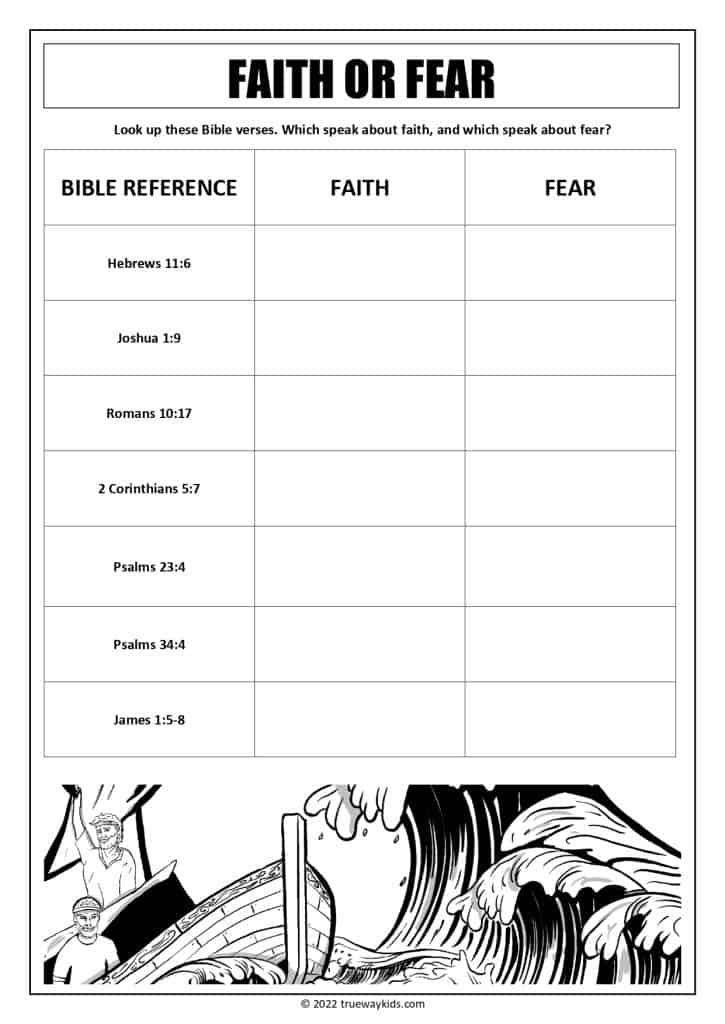
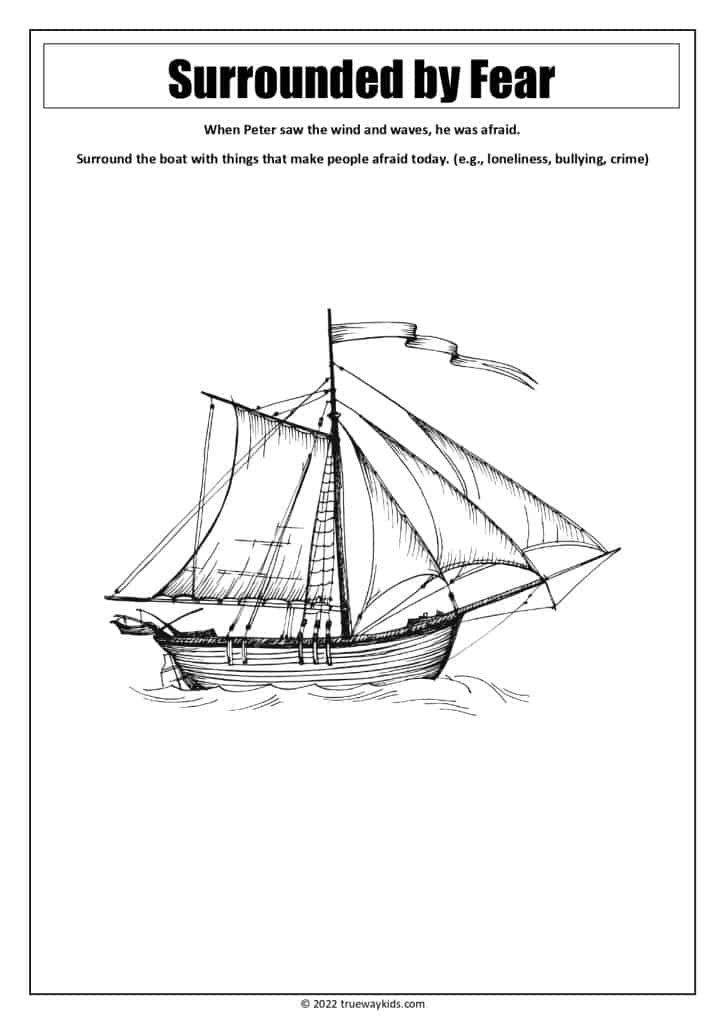
DOWNLOAD THE FREE PRINTABLE LESSON


